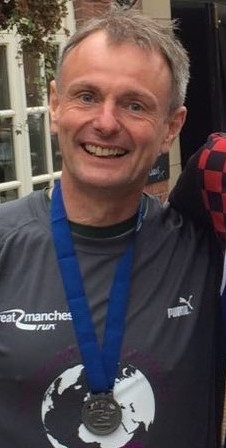IN A NEW SERIES OF ARTICLES, WE WILL LOOK AT THE INDIVIDUAL ROLES OF A CROSS-SECTION OF DIFFERENT FTI EMPLOYEES. FOR OUR FOURTH ISSUE OF “MEET THE TEAM” WE SPEAK TO MR. NEIL BROCK
WHAT IS YOUR NAME?
My name is Neil Brock and I am from Manchester in the UK.
WHAT IS YOUR CURRENT POSITION IN FTI?
I am currently the sales and business development manger for Europe, having worked for the company since 2009 and held a number of different roles.
WHAT DOES YOUR ROLE INVOLVE?
FTI has recently evolved its business strategy to move towards a partner-distribution model, and my principle responsibility is to manage the master distribution agreements FTI has in place with three key distribution partners in Europe. Technically, this responsibility is relatively new for me as the new business strategy was rolled out within the last month, however the distribution partners we have chosen are ones I have been working with for several years so there is an excellent relationship in place already and I see this change in role as a positive development. Also, I am responsible for new sales and business development in new territories such as Eastern Europe where FTI’s brand is less well known, plus I also manage a select number of key FTI customers on a direct basis.
HOW WOULD YOU DESCRIBE YOUR TYPICAL DAY AT FTI?
Being based in the UK, I work remotely from the central FTI office in Ras Al Khaimah. Much of my day is spent communicating with the team to ensure that I keep track of product developments which equips me with any new information available to assist with the business of growing sales for FTI in Europe. The other side of my daily activities involves liaison with clients and distributors to enable their requests and needs are effectively communicated to my manufacturing and production colleagues back in the RAK central office. While I would say that no two days are the same, the crucial, central factor to my role which I employ on a daily basis is the ability to both listen and communicate effectively.
WHAT ARE THE MAIN CHALLENGES YOU FACE IN YOUR ROLE?
I would say there are three skills that are essential to my role – communication, innovation and negotiation. I often find myself in a position whereby I am the “interpreter” between our clients and our manufacturing operations. For this, it is essential that I understand enough detail about the requirements and workings of both to be able to innovate different solutions which ensure that our clients needs are met, whilst our manufacturing and production teams continue to adhere to their high working practices and standards. Innovating such solutions is the biggest challenge of my role, however it is one that I enjoy and makes the job interesting and worthwhile.
HOW WOULD YOU DESCRIBE THE TEAM THAT YOU WORK WITH?
My main contact with the team is via the senior management, especially the leaders of the product management department, who I communicate with on a very regular basis. I also work closely with the ordering processing team, and in general I would describe all the people I work with as very efficient and trustworthy. I also enjoy the multi-cultural nature of the people that I deal with, and during my tenure at FTI I have learned a lot about how cultural norms differ from region to region, and how to adapt my own communication style accordingly. That said, no matter what the cultural background of my colleagues at FTI one common thread is that everyone shares a positive attitude and a willingness to succeed.
WHAT DO YOU LIKE TO DO OUTSIDE FTI?
Running is my main passion outside work – I have run 7 marathons and hope to break the 3 hour mark when I run the London marathon in April this year. I have also ran the RAK Half Marathon on my travels to Ras Al Khaimah, and I must say it is a fantastic event and a great course for runners. I am married with two adult children, who are both following their own career paths in the UK (based in London and Leeds respectively) and I enjoy sampling local cuisines when I travel.













